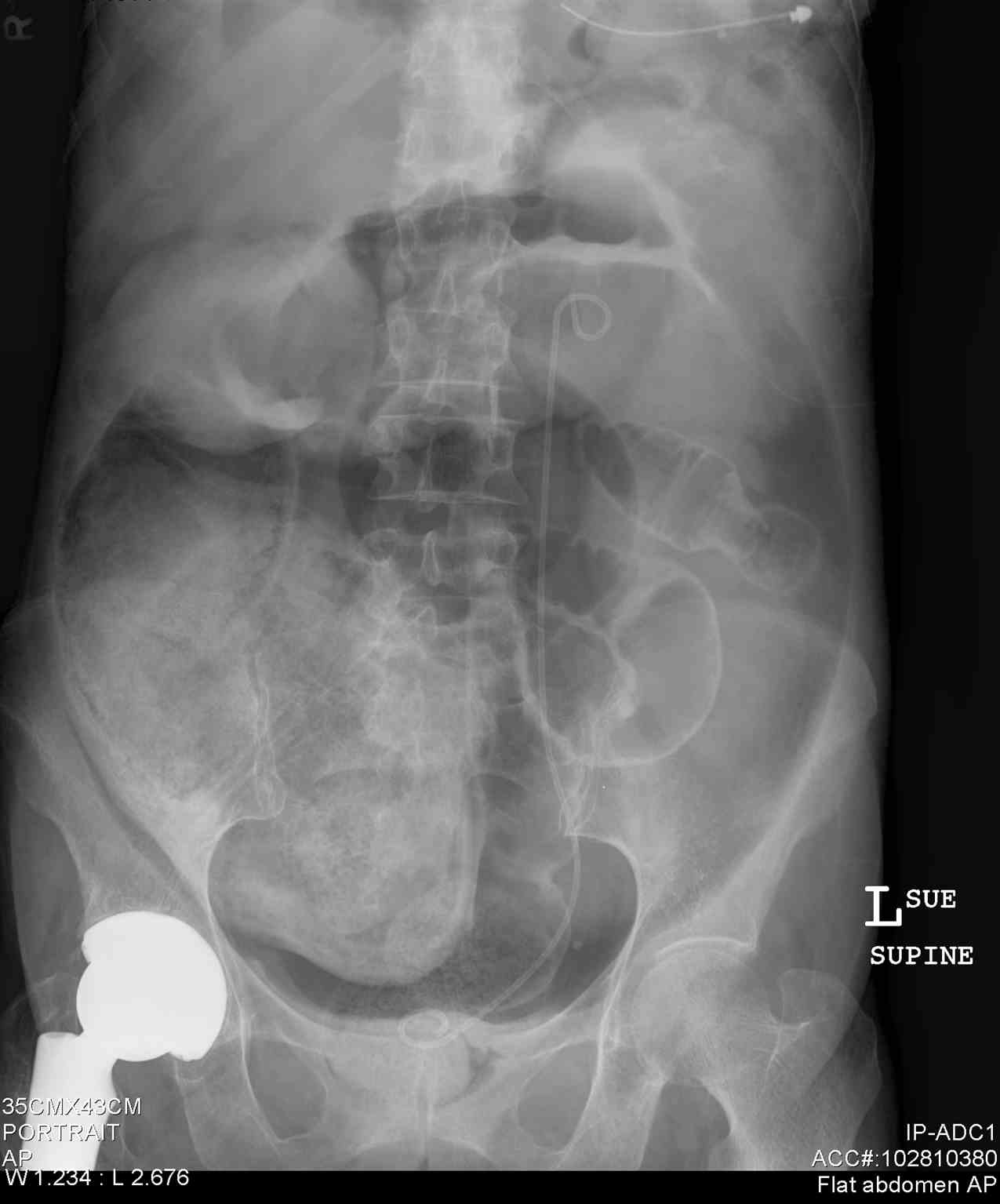[1]
Tanner TN, Hall BR, Oran J. Pneumoperitoneum. The Surgical clinics of North America. 2018 Oct:98(5):915-932. doi: 10.1016/j.suc.2018.06.004. Epub
[PubMed PMID: 30243453]
[2]
Grotelüschen R, Bergmann W, Welte MN, Reeh M, Izbicki JR, Bachmann K. What predicts the outcome in patients with intestinal ischemia? A single center experience. Journal of visceral surgery. 2019 Oct:156(5):405-411. doi: 10.1016/j.jviscsurg.2019.01.007. Epub 2019 Feb 10
[PubMed PMID: 30745185]
[3]
Long B, Robertson J, Koyfman A. Emergency Medicine Evaluation and Management of Small Bowel Obstruction: Evidence-Based Recommendations. The Journal of emergency medicine. 2019 Feb:56(2):166-176. doi: 10.1016/j.jemermed.2018.10.024. Epub 2018 Dec 6
[PubMed PMID: 30527563]
[4]
Low ZX, Bonney GK, So JBY, Loh DL, Ng JJ. Laparoscopic versus open appendectomy in pediatric patients with complicated appendicitis: a meta-analysis. Surgical endoscopy. 2019 Dec:33(12):4066-4077. doi: 10.1007/s00464-019-06709-x. Epub 2019 Feb 25
[PubMed PMID: 30805783]
Level 1 (high-level) evidence
[5]
Špičák J, Kučera M, Suchánková G. Diverticular disease: diagnosis and treatment. Vnitrni lekarstvi. 2018 Summer:64(6):621-634
[PubMed PMID: 30223660]
[6]
Kavitt RT, Lipowska AM, Anyane-Yeboa A, Gralnek IM. Diagnosis and Treatment of Peptic Ulcer Disease. The American journal of medicine. 2019 Apr:132(4):447-456. doi: 10.1016/j.amjmed.2018.12.009. Epub 2019 Jan 3
[PubMed PMID: 30611829]
[7]
Zhang L,Wang H, [Imaging characteristics of gastrointestinal neoplastic acute abdomen]. Zhonghua wei chang wai ke za zhi = Chinese journal of gastrointestinal surgery. 2018 Nov 25
[PubMed PMID: 30506532]
[8]
Biffl WL, Leppaniemi A. Management guidelines for penetrating abdominal trauma. World journal of surgery. 2015 Jun:39(6):1373-80. doi: 10.1007/s00268-014-2793-7. Epub
[PubMed PMID: 25315088]
[9]
Song WC, Lv WW, Gao XZ. Iatrogenic Gastrointestinal Perforation Following Therapeutic Endoscopic Procedures: Management and Outcome. Journal of the College of Physicians and Surgeons--Pakistan : JCPSP. 2017 Sep:27(9):563-565
[PubMed PMID: 29017673]
[10]
Rich BS, Dolgin SE. Necrotizing Enterocolitis. Pediatrics in review. 2017 Dec:38(12):552-559. doi: 10.1542/pir.2017-0002. Epub
[PubMed PMID: 29196510]
[11]
Lim S,Halandras PM,Bechara C,Aulivola B,Crisostomo P, Contemporary Management of Acute Mesenteric Ischemia in the Endovascular Era. Vascular and endovascular surgery. 2018 Oct 25;
[PubMed PMID: 30360689]
[13]
Ko BM. [Small Bowel Tumors and Polyposis: How to Approach and Manage?]. The Korean journal of gastroenterology = Taehan Sohwagi Hakhoe chi. 2018 Dec 25:72(6):277-280. doi: 10.4166/kjg.2018.72.6.277. Epub
[PubMed PMID: 30642146]
[14]
Vanaclocha-Espi M, Ibáñez J, Molina-Barceló A, Valverde-Roig MJ, Pérez E, Nolasco A, de la Vega M, de la Lastra-Bosch ID, Oceja ME, Espinàs JA, Font R, Pérez-Riquelme F, Arana-Arri E, Portillo I, Salas D, CRIBEA Group. Risk factors for severe complications of colonoscopy in screening programs. Preventive medicine. 2019 Jan:118():304-308. doi: 10.1016/j.ypmed.2018.11.010. Epub 2018 Nov 8
[PubMed PMID: 30414944]
[15]
Fan YC,Peery AF, Therapeutic management of acute uncomplicated diverticulitis. Minerva gastroenterologica e dietologica. 2017 Jun;
[PubMed PMID: 27990793]
[16]
Bill JG, Smith Z, Brancheck J, Elsner J, Hobbs P, Lang GD, Early DS, Das K, Hollander T, Doyle MBM, Fields RC, Hawkins WG, Strasberg SM, Hammill C, Chapman WC, Edmundowicz S, Mullady DK, Kushnir VM. The importance of early recognition in management of ERCP-related perforations. Surgical endoscopy. 2018 Dec:32(12):4841-4849. doi: 10.1007/s00464-018-6235-8. Epub 2018 May 16
[PubMed PMID: 29770887]
[17]
Wang H, Li A, Shi X, Xu X, Wang H, Wang H, Yu E. [Diagnosis and treatment of iatrogenic colonoscopic perforation]. Zhonghua wei chang wai ke za zhi = Chinese journal of gastrointestinal surgery. 2018 Jun 25:21(6):660-665
[PubMed PMID: 29968241]
[18]
Paolantonio P, Rengo M, Ferrari R, Laghi A. Multidetector CT in emergency radiology: acute and generalized non-traumatic abdominal pain. The British journal of radiology. 2016:89(1061):20150859. doi: 10.1259/bjr.20150859. Epub 2016 Jan 22
[PubMed PMID: 26689097]
[20]
Titos-García A, Aranda-Narváez JM, Romacho-López L, González-Sánchez AJ, Cabrera-Serna I, Santoyo-Santoyo J. Nonoperative management of perforated acute diverticulitis with extraluminal air: results and risk factors of failure. International journal of colorectal disease. 2017 Oct:32(10):1503-1507. doi: 10.1007/s00384-017-2852-2. Epub 2017 Jul 17
[PubMed PMID: 28717840]
[21]
Nimmagadda N, Matsushima K, Piccinini A, Park C, Strumwasser A, Lam L, Inaba K, Demetriades D. Complicated appendicitis: Immediate operation or trial of nonoperative management? American journal of surgery. 2019 Apr:217(4):713-717. doi: 10.1016/j.amjsurg.2018.12.061. Epub 2019 Jan 3
[PubMed PMID: 30635209]
[22]
Zhao N, Li Q, Cui J, Yang Z, Peng T. CT-guided special approaches of drainage for intraabdominal and pelvic abscesses: One single center's experience and review of literature. Medicine. 2018 Oct:97(42):e12905. doi: 10.1097/MD.0000000000012905. Epub
[PubMed PMID: 30335020]
[23]
Siragusa G,Gelarda E,Epifanio E,Geraci F,Geraci G, [Video laparoscopy in abdominal emergencies]. Minerva chirurgica. 1999 Apr;
[PubMed PMID: 10380516]
[24]
Tengberg LT. Perioperative treatment of patients undergoing acute high-risk abdominal surgery
. Danish medical journal. 2018 Feb:65(2):. pii: B5442. Epub
[PubMed PMID: 29393040]
[25]
Bower KL, Lollar DI, Williams SL, Adkins FC, Luyimbazi DT, Bower CE. Small Bowel Obstruction. The Surgical clinics of North America. 2018 Oct:98(5):945-971. doi: 10.1016/j.suc.2018.05.007. Epub 2018 Aug 7
[PubMed PMID: 30243455]
[26]
Wada K, Takeuchi N, Emori M, Takada M, Nomura Y, Otsuka A. Two Cases of Pneumatosis Cystoides Intestinalis With Intraperitoneal Free Air. Gastroenterology research. 2017 Jun:10(3):208-211. doi: 10.14740/gr834w. Epub 2017 Jun 30
[PubMed PMID: 28725312]
Level 3 (low-level) evidence
[27]
Ho VP,Schiltz NK,Reimer AP,Madigan EA,Koroukian SM, High-Risk Comorbidity Combinations in Older Patients Undergoing Emergency General Surgery. Journal of the American Geriatrics Society. 2018 Dec 2;
[PubMed PMID: 30506953]
[28]
Cooper Z, Lilley EJ, Bollens-Lund E, Mitchell SL, Ritchie CS, Lipstiz SR, Kelley AS. High Burden of Palliative Care Needs of Older Adults During Emergency Major Abdominal Surgery. Journal of the American Geriatrics Society. 2018 Nov:66(11):2072-2078. doi: 10.1111/jgs.15516. Epub 2018 Sep 24
[PubMed PMID: 30247747]
[29]
Abualnadi N, Dizon AM, Schiff L. Opioid Adjuncts: Optimizing Opioid Therapy With Nonopioid Medications. Clinical obstetrics and gynecology. 2019 Mar:62(1):37-47. doi: 10.1097/GRF.0000000000000423. Epub
[PubMed PMID: 30614847]

